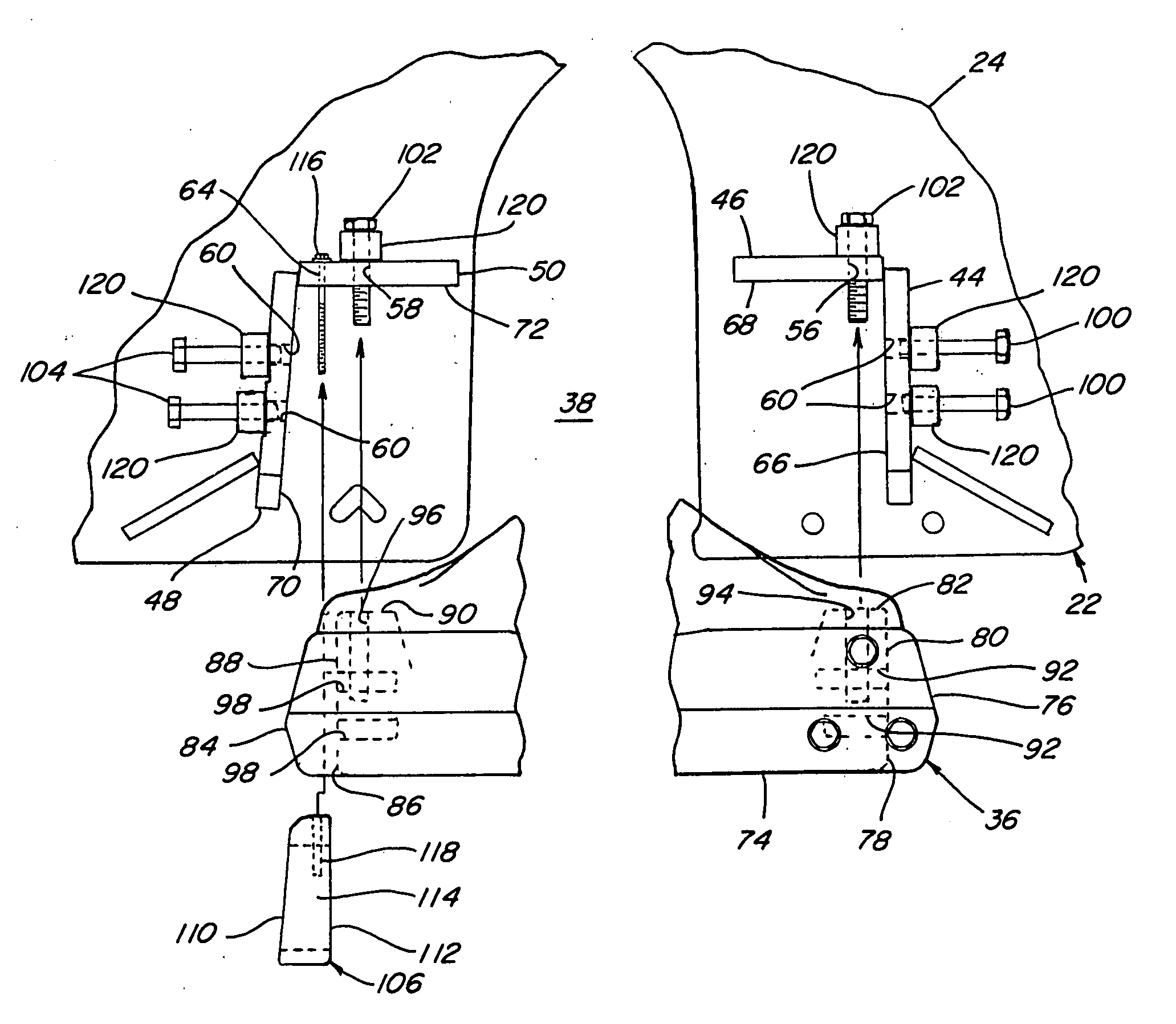Apparatus and method for reducing shear loading on elements connecting an axle and a chassis of a vehicle
a technology of axles and chassis, applied in the direction of mechanical machines/dredgers, rigid support of bearing units, manufacturing tools, etc., can solve the problems of increasing variance and non-uniformity between individual vehicles of mass produced vehicles, misposition of surface and mounting pads located on weldments, and skewed orientation, so as to reduce or straighten out at least some of any shear forces acting in adjacent regions, increase variance and non-uniformity, and reduce the effect of s
- Summary
- Abstract
- Description
- Claims
- Application Information
AI Technical Summary
Benefits of technology
Problems solved by technology
Method used
Image
Examples
Embodiment Construction
[0015] Referring now to the drawings, in FIG. 1, a vehicle 10, which is a four track drive tractor typically used for such purposes as agriculture, earthmoving, construction, and the like, is shown. Vehicle 10 includes a front segment 12 and a rear segment 14, connected together for pivotal movement one relative to the other, about a central pivotal axis (not shown) therebetween. Front segment 12 is drivingly supported by a pair of front tracks 16 on opposite sides thereof, and rear segment 14 is drivingly supported by a pair of rear tracks 18 on either side thereof. Front segment 12 includes a front chassis 20, and rear segment 14 includes a rear chassis 22. Front chassis 20 includes a pair of spaced apart, fore to aft and upwardly extending side chassis plates, represented by left side chassis plate 24. An engine (not shown) is supported between the chassis side plates under a front hood 26, and an operator cab 28 is supported on the side chassis plates aft of hood 26. Rear chassi...
PUM
| Property | Measurement | Unit |
|---|---|---|
| acute angle | aaaaa | aaaaa |
| acute angle | aaaaa | aaaaa |
| shear forces | aaaaa | aaaaa |
Abstract
Description
Claims
Application Information
 Login to View More
Login to View More - R&D
- Intellectual Property
- Life Sciences
- Materials
- Tech Scout
- Unparalleled Data Quality
- Higher Quality Content
- 60% Fewer Hallucinations
Browse by: Latest US Patents, China's latest patents, Technical Efficacy Thesaurus, Application Domain, Technology Topic, Popular Technical Reports.
© 2025 PatSnap. All rights reserved.Legal|Privacy policy|Modern Slavery Act Transparency Statement|Sitemap|About US| Contact US: help@patsnap.com



